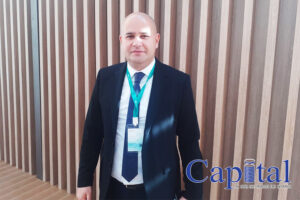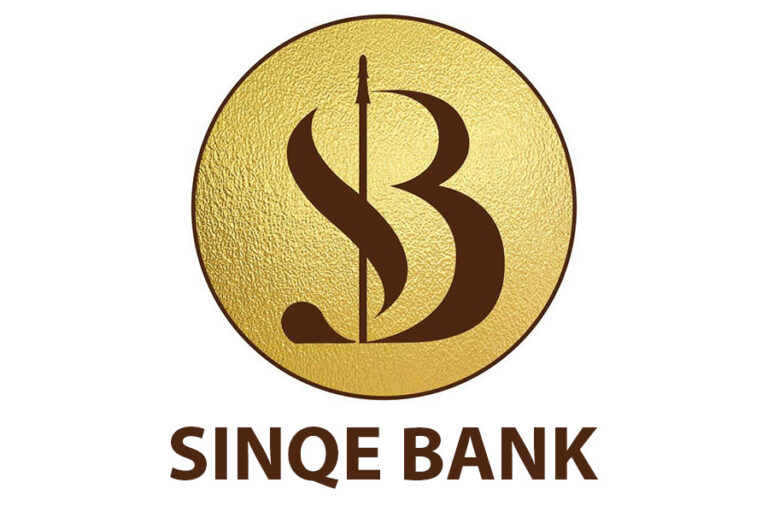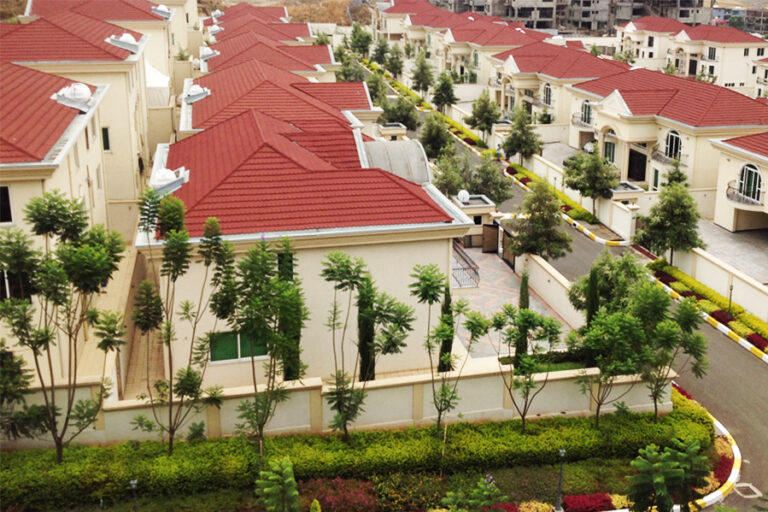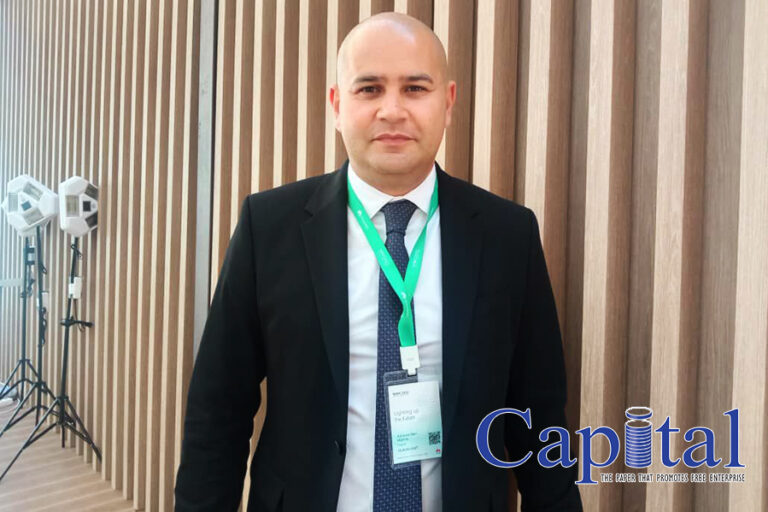The National Bank of Ethiopia (NBE) has approved the appointment of Neway Megersa Lenjiso, as the first president of Sinqe Bank.
Neway brings to the table about 13 years of experience in the banking industry, serving Nib international Bank for 5 years as planning and research officers and 8 years of service at several positions in Oromia bank. Similarly, the new president presents high level managerial expertise as he has led Kegna Beverages as Managing Director as from 2018. Moreover, for the past year, Neway was working as board chairperson of the bank.
The company has also appointed Zewdie Tefera, who has been working as acting president of the bank as the Chief Operating Officer.
Sinqe on February 16, 2022 officially received its license from the National Bank of Ethiopia (NBE) to start operations with a subscribed capital of 15 billion birr and a paid up capital of 7 billion birr following its transformation from Oromia Credit and Saving Share Company staring from May 2021.
Following the issuance of proclamation no.40/1996 proclamation that determines the licensing and supervision of micro finance institutions, Oromia Credit and Saving Share Company was established in August 1997 to give micro finance service obtaining operational license from NBE and trading license from the federal Ministry of Trade and Industry.
The change came through the proclamation no 626/2009 and NBE directive no SBB/74/2020, which allows microfinance institutions to evolve into commercial banks with a two-year transition period, to which the executives of the microfinance made the transformation from microfinance to banking services. The company was thus renamed to Sinqe bank, which is sourced from the cultural institution of Oromo women.
“The primary goal of the relicensing is to realize inclusive services to all withstanding the microfinance service targeting job creation and financing to the poor whilst incorporating larger financial seekers as well,” said the bank’s board during the transition.
Currently, the company has more than 400 full-fledged branches. When it becomes operational, the bank will start giving its services with these branches.
NBE gives green light for new Sinqe Bank president
Revisiting the historical record of sanctions
Sanctions, ’restrictive measures’ in official EU speak, are imposed to induce target countries or regimes to change a policy or action deemed unacceptable by the international community. States or regimes which have triggered wars, threatened the territorial integrity of other countries or committed crimes against humanity have recurrently been subject to such punitive measures.
Sanctions may involve trade and arms embargoes, asset freezes and restrictions on the activities of powerful individuals or companies, as well as bans on international financial transactions and investments. These can be accompanied by measures such as travel bans on senior representatives of a government or their close associates. Acting as negative incentives to induce targets to alter their reprehensible behaviour, sanctions have emerged as complementary instruments in a wider array of foreign policy tools.
In the interwar period, the League of Nations played a key role in enacting sanctions against countries threatening international security, albeit with limited success. Such was the case with Mussolini’s Italy after its invasion of Ethiopia in 1935, but measures against Imperial Japan and Nazi Germany were equally weak and potentially counterproductive, as they were often portrayed by the targeted countries as acts of war.
After the Second World War, the role of supreme international ‘sanctioner’ was clearly attributed to the United Nations, but the Cold War soon gridlocked the Security Council in this respect. Thus leaving the imposition and implementation of restrictive measures to leading major powers. Relevant cases in point were the United State sanctions against Britain, France and Israel during the Suez crisis in 1956 and the United State sanctions against the United Soviet Socialist Republic (USSR) after its invasion of Afghanistan in late 1979. But the United State was not alone. The Arab League imposed sanctions against Israel during the 1948 war which led to the creation of the state, and China imposed sanctions against Vietnam after its invasion of Kampuchea (now Cambodia) in late 1978.
Since the end of the Cold War, restrictive measures have been deployed with greater frequency. The sanctions imposed on Saddam Hussein’s Iraq, under the aegis of the UN, after its invasion of Kuwait in 1990 were comprehensive economic sanctions, which entailed major humanitarian costs. Yet the UN-sponsored ‘oil-for-food’ programme introduced in 1998 to alleviate the suffering of the civilian population was later criticised for giving rise to widespread corruption both inside and outside Iraq. International sanctions have since tended to shift from being comprehensive to targeted or ‘smart’, focusing on individual leaders and organisations mainly to punish human rights violations.
With threats to international security emanating primarily from intra-state conflicts, fragile or failed states and transnational terrorist networks able to carry out their operations regardless of state borders, sanctions policies have undergone a fundamental shift, targeting non-state actors as well. The UN doctrine of Responsibility To Protect (R2P), developed and conceptualised in the early 2000s, made sanctions part and parcel of a series of measures taken by the international community to punish the aggression of governments against their own citizens, as was the case with Libya and Syria in 2011, in spite of R2P being operationalised only in the former.
Other actions have also become major justifications for the imposition of sanctions: nuclear proliferation, as in the case of Iran and North Korea, and terrorist activities, as in the case of al-Qaeda, Boko Haram or the Islamic State of Iraq and the Levant.
Iana Dreyer, a Senior Associate Analyst and Jose Luengo-Cabrera, a Junior Analyst at the European Union Institute for Security Studies (EUISS) indicated that both historical precedents and academic comparisons indicate that the effectiveness of sanctions is, per se, rather limited. Statistical analysis covering the period since World War I shows that between one fifth and one third of them have fulfilled their stated aims and often only partially. While, in general, sanctions tend to fail, the body of evidence on successful ones available today provides some interesting insights.
Sanctions raise expectations as to what they can achieve, but such expectations need to be managed. In old-fashioned cases of inter-state conflict, sanctions were generally conceived as instruments to weaken the adversary’s military capacity by blocking access to key resources and raw materials. But these measures were not expected to do the job of actually and ultimately winning the war. Sanctions, however, can become a useful instrument once a negotiation or peace process has begun, setting incentives for those responsible for the conflict to commit to a peace settlement.
Sanctions have frequently been followed by military action. This was the case in the former Yugoslavia, where sanctions were first put in place in 1992. Those measures initially failed to stop Yugoslavia and the various warring factions, but they were strengthened over time and used to reinforce the military action taken by NATO in the run-up to the Dayton accords of 1995/1996. Sanctions against Serbia were also part of the toolkit used by Western powers in the 1999 Kosovo war and after.
Sanctions also tend to be more effective, perhaps predictably, when there is broad international consensus on using them and when they are applied multilaterally and in a coordinated fashion. The greater international isolation and stigmatisation stemming from broadly endorsed international sanctions is believed to be a greater inducement for the targeted regime to change its behaviour and comply with the international community’s demands.
Sanctions never work in isolation. In today’s war contingencies, sanctions are most effective when they are embedded in a wider strategy involving diplomatic efforts to end violence, oust a war criminal and/ or restore justice after major crimes against humanity have been committed. Some credible threat of military action is also often necessary to induce the desired effect. Sanctions are then used as a warning and inducement to change behaviour ahead of possible military action. Sanctions against Liberia and Sierra Leone in the late 1990s, for example, should not be seen separately from Britain’s UN-backed military intervention, the establishment of a Sierra Leone Special Court, and policies to isolate and bring former Liberian President Charles Taylor to trial at The Hague.
Sanctions can be said to work better when their goals are limited, clearly articulated, and solely aimed at behavioural, not regime change. Yet comparisons have shown that such behavioural change is easier to achieve with more pluralistic societies and democratic regimes as in the Suez case. Restrictive measures aimed at authoritarian regimes have a lower success rate as they may induce a rally-around-the-flag effect and strengthen the powers that be, which are then in an ideal position to seize and redistribute at will the more limited resources stemming from the negative economic impact of sanctions as in the case of Iraq.
Sanctions have costs. For an effective sanctions policy, addressing this issue politically is essential. The humanitarian costs of broad economic sanctions such as oil embargoes and comprehensive financial restrictions on the ‘target’ side can be dire and end up undermining their legitimacy and credibility. Dealing with the domestic losers of sanctions through compensations and/or phase-in periods is thus crucial.
Last but certainly not least, sanctions need to be properly implemented and closely monitored, as targets have strong incentives to circumvent them and can avail of a range of loopholes to do so.
Investment opportunities in Ethiopia channeled to interests such as real estate, report
A new study has revealed that most opportunities for diaspora investing in Ethiopia reflect and cater to the current interests in the market which is majorly tied to buying real estate and starting a business.
The report dubbed ‘Diaspora Remittances Mapping Report’ submitted to Pangea Trust by DMA Global and Islamic Finance Laywer and Advocate, Economic Justice in Africa, Rhama Hersi reveals that the traditional definition of investing, in which someone buys shares in a stranger’s business and hopes for a return or shared profits, is still relatively new in Ethiopia.
“We need to find ways of leveraging untapped financial resources to support Startups in Africa. The findings of this report are relevant to increasing overall awareness of the role of diaspora in economic development,” said Sofie Berghald from Swedish International Development Agency (SIDA) Headquarters.
“The Ethiopian government and Ethiopian organisations, most especially banks, are genuinely interested in foreign investments, including those of the diaspora,” reads part of the report.
According to the analysis, like countries such as Nigeria and Kenya, Ethiopia does not have a stock market, making buying shares in companies a bit more complicated and something the investor would have to do directly with the business in question.
However, there remains a high appetite for investment opportunities in Africa from the diaspora with nearly 56 percent who had never invested in Africa in the past were interested to start and receive more information about investing.
On Islamic Finance, the report further shows some of the key drivers for growth in Islamic investments include oil revenues from the Islamic States, increasing propensity for ethically driven products and the rise of enabling institutions.
“Islamic finance is known as interest-free banking in Ethiopia and while it is growing, it is not yet pervasive. Ethiopia has a long history with Islam and 34 percent of the country identifies as Muslim, with that percentage varying greatly by region,” Islamic Finance Laywer and Advocate, Economic Justice in Africa, Rahma Hersi.
“Islamic finance must be tied to assets- to a real economy- it cannot be about something you don’t own Prohibition of interest- money is only a medium of exchange, not a commodity in itself,” she added.
Primary research of the study was carried out in the form of stakeholder interviews with public and private organizations in Ethiopia, as well as diaspora community leaders in the U.S. and Canada.
At the same time, a survey was also disseminated among diaspora communities across the US, Canada and Europe mainly because of the diaspora profiles in those regions, compared to diaspora members in regions such as the Middle East and Eastern and Southern Africa.
The report also highlights some of the barriers to investing in Ethiopia which include: promising developments have been occurring in Ethiopia’s financial sector that have opened it up to diaspora investors, but some major regulatory hurdles, specifically around foreign exchange, remain.
“Many of Ethiopia’s parallel market and informal remittances issues stem from the tight controls the government imposes on their currency,” it reads in part.
“In terms of financing for MSME’s in Ethiopia,61 percent have used their own money, 26.5 percent used banks, 7.2 percent used savings and credit associates and 4.5 percent got funding from their family and friends,” said Omolayo Nkem Ojo who is the Research Manager DMA global limited.
Most Ethiopians in the diaspora consider their remittances as separate from investments.
Most respondents sent money monthly, and predominantly sent between USD 100 to USD 499.
Those surveyed also indicated that they sent money to their parents (27 percent), followed by their siblings (13 percent) and friends (13 percent).
Food is the primary use of remittances to Ethiopia with almost 21 percent of respondents saying that remittances go towards feeding their families back in Ethiopia.
Most respondents (49 percent) said that the person receiving the money decides what to spend it on and this was consistent across age groups.
Respondents reported using a variety of channels to send money to Ethiopia, but the majority stated that they used online money transfer operators (24 percent).
The Pangea adopted document that was primarily funded by Swedish International Development Agency also revealed that the Muslim respondents further preferred using Hawalas as their main channel of remitting their funds back home.
“There is potential to provide the right information for the right investment decisions- We need to provide education and engage with the right stakeholders. There is interest in investment in social impact and innovation businesses- the question is what mechanisms we can put in place to harness this interest as an opportunity,” said Pangea Trust Managing Director Anne Lawi.
Huawei’s technologies
Founded in 1987, Huawei is a leading global provider of information and communications technology (ICT) infrastructure and smart devices. They claim that they are committed to bringing digitalization to every person, home and organization for a fully connected, intelligent world. The firm which has more than 194,000 employees operates in more than 170 countries and regions, serving more than three billion people around the world.
Huawei also lead the global market in telecommunication equipment in 2021, covering 28.7 percent of the market share in sales revenue, followed by Ericsson, Nokia, ZTE and Cisco, according to a report by Dell’Oro, a Silicon Valley-based telecom information and service provider.
Despite the US campaign to curb the use of Huawei’s equipment, which is impacting the company’s position outside of China, it still represented No 1 of global revenue share, up 7 percent year-on-year.
Recently, the giant telecom company participated at the Mobile World Congress (MWC) organized by the Global System for Mobile Communications Association (GSMA) in Barcelona, Spain from February 28 to March 3, 2022. During the exhibition, which is one of the largest in the world, Capital’s Groum Abate caught up with Adnane Ben Halima, Huawei’s Northern Africa and Mediterranean Region Vice President in charge of Public Relations, to talk about the company’s future plans in Africa and Ethiopia. Excerpts;
Capital: What projects are you involved in, in Ethiopia and Africa as a whole?
Adnane Ben Halima: As a leading global provider of information and communications technology (ICT), infrastructure and smart devices, we work in Africa mainly on infrastructure. We are building infrastructures across many countries in Africa including Ethiopia.
Today in MWC, we are here focusing on the new technologies in the market such as finding very high bandwidth based on mobile networks ranging from 5G, 4G or 3G and also fixed ones.
As a firm, we emphasize a lot on the cloud so that countries can deal with their data in a smarter matter. All countries in general ought to have national cloud and data centers inside their country so as to their protect data. Moreover, every country ought to build a national digital economy since the current economy is moving based on wisdom in all sectors.
This year’s congress we’re trying to show all new technologies and in some cases, though not new, we are also driving for a green sustainable economy and sustainable development, based on green power, and with products that also have high efficiency in terms of energy consumption.
In Ethiopia, we have a strong branch which primarily develops infrastructure within the country and we also work to better the digital space. In addition, through several actions we are trying to transfer our knowledge to people in Ethiopia, such as in the education systems, where we have forged partnerships with universities. Similarly, we work with the government to share new technologies like education intelligence, big data centers, the cloud and so on.
Our aim is to have as much people skilled in the digital space as possible in the country so as to help the ecosystem move forward and create new opportunities whilst building a stronger future.
Capital: What kind of technologies are you introducing to Ethiopia?
Adnane Ben Halima: We are highly working on broadband connectivity to give people swifter internet. Of course, 5G is one of those tools. There are six broadband services based on optical fiber on GSM technology and even for the 4G there is a 4G Plus technology which gives much higher bandwidth.
With regards to 5G roll-out, the government has first to issue the license for the 5G operator and then the operator will select the vendor to build the necessary infrastructure, and that is when we come into play. So the country is the one to determine when to roll-out this technology. The decision is also based on some prerequisites such as availability of 5G devices; this is because as a country if you launch the 5G networks yet you do not have the compatible devices, nobody would enjoy the network. There is always a rule of thumb that guides us, that is for the 5G network to be available in a country there must at least be 15-20 percent 5G mobile penetration in the country.
The pricing of these 5G devices has been very expensive over the years, and that is why it has not gained much traction in Africa. But I am hopeful that the prices of these devices will reduces and become affordable and that we will see the use of 5G sooner rather than later.
When paying emphasis to the use case of this technology, we should ask ourselves, why we require higher bandwidth. Is it just for comfort tools or just to do something interesting? For us our vision is to continue to encourage government and operators alike to use higher bands, so as to provide great services to customers.
Capital: What is your evaluation of the compatibility of networks and the networks provided?
Adnane Ben Halima:: For every technology there is a standard organization in charge to make all the vendors to be aligned. To this regard we follow diligently the set standards and requirements when it comes to being compliant our devices align with the standards. So we are following the standards and our products are fully compliant with the standards. For vendors who follow the standards, interoperability is almost never an issue.
Our company has a strong research and development center where we make interoperability tests, and this is done in China in our headquarters. We also do the same in our centers in Europe.
Some small providers might experience issue in this department, but for big companies like Huawei and other big competitors we don’t have such issues since we follow the standards.
Capital: How do you see the telecommunication sector in East Africa?
Adnane Ben Halima: Generally speaking the digital sector is now booming in the continent, and the device availability is affordable now in African countries. The use of data also was at an all-time high during the pandemic, since majority of things were done virtually.
There is a huge opportunity to capitalize on the telecommunications industry. For example, recently Ethio-Telecom launched Tele Birr which will most definitely be of great boost to the GDP.
When considering digitalization, we should not just stop at social media and the like. There remain many avenues where digitalization can be of great impact, such as transport and the health sector. Thus far, the east Africa sector is blossoming and more impactful developments.
Capital: What are you doing to modernize the education sector?
Adnane Ben Halima: The education sector is now totally transforming. The definition of a university is changing and evolving. We can see even big universities are going virtual, where students have the opportunity to access online courses, anytime, anywhere, whilst collaborating with their mates and professor.
From the global context, to the regional east African context, I believe education will be transformed dramatically. From our side we are providing the network, the connectivity and other necessary things to let this happen. As we build this ecosystem, layers to the system are also needed to make the education space bloom such as through localized learning apps.
Thus as much as the ecosystem is very important so is the layer of application built on it. We are also collaborating on that front to encourage technology actors that push for academic excellence on various fronts.
Capital: Can you tell us about your Intelligent Traffic Management Solutions?
Adnane Ben Halima: Huawei has launched Intelligent Traffic Management Solution(ITMS) for overseas markets to address challenges on traffic law enforcement, traffic violation inspection, and traffic control with advanced technologies including big data, AI, cloud, 5G, etc.
In the post-epidemic era, a safe and sound transport system is essential to economic recovery
ICT technologies such as cloud computing, big data, and artificial intelligence have played an important role in epidemic prevention and control, making governments and enterprises around the world realize that digital transformation is inevitable. With economy recovering and markets resuming, a safe and operational transportation system is essential.
Road traffic management and safety is always among the top priority for many governments around the world as it has a direct impact on life quality. Huawei is working closely with our ecosystem partners to develop the ITMS, supporting system integration upon an open platform.
Capital: Customers who buy data centers from Huawei are increasing from time to time. What is the secret behind that?
Adnane Ben Halima: There are three factors. The first factor is very good products, with the reliability of the products being 99.99%. If any problem happens with the data center it’s a big disaster and through the reliability we provide, our products always attracts our customers.
We as a company not only deliver on time, but also make sure the project is completed at a fast pace. Where other firms can take up to three years to build a data center, we take six months to complete the same. And I believe, our urgent delivery, makes us stand out from our competition.
Thirdly, what gives us cutting edge technology in green energy consumption. Our data centers are designed to be efficient, energy efficient, and they can consume much less power than others because of new technology related to fan and auto cooling systems.






